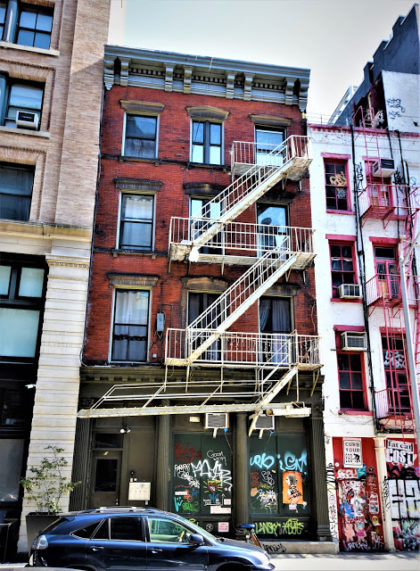In the News: “The Mayor of Tribeca”
••• “A 26-year-old Brooklyn man was thrown to the ground [at Fulton Transit Hub] and held down while two accomplices hit him and went through his pockets, taking his $150 Samsung Galaxy phone. The accomplices fled but the victim managed to capture his alleged attacker, […] who was arrested by police and charged with second degree robbery.” Also in the Tribeca Trib police blotter: Ladies, do not hang your purse over the back of your chair.
••• A profile of “Theodore Elgin Johnson, aka Teddy, aka the mayor of Tribeca, as the neighborhood residents and local shop owners are apt to fondly address him. […] The enthusiastic, 74-year old Tribeca booster [can often be found] at his designated post near the corner of the 24 Leonard Street building and W. Broadway, where Ted is employed as a parking attendant for PF Parking Corp.” —Downtown Magazine
••• “After nearly a year and a half in exile, Soho Rep has returned to Walker Street, and is kicking off its 43rd season with a typically startling play, Aleshea Harris’s Is God Is, which begins previews Feb. 6.” —New York Times
••• The New York Post makes a big deal about “revealing” where actor Aziz Ansari’s “secret Tribeca apartment” is, even though Babe made it pretty clear in that misguided post a couple of weeks back.
••• Whole Foods sounds like a miserable place to work, thanks to the new inventory system and its “scorecards” for employees. —Grub Street
••• “In the early and mid-nineteenth century, the Underground Railroad secretly escorted tens of thousands of Southern enslaved people to Northern destinations, where slavery was illegal. The African American publisher David Ruggles was born a freeman in Connecticut and moved to New York to energize the emerging abolitionist movement via the New York Vigilance Committee, one of the city’s most influential abolitionist collectives. And thank goodness David Ruggles was there. At his home at 36 Lispenard Street, Ruggles ran a printing press and reading room for abolitionist literature. He also sheltered an estimated 600 fugitive slaves here over the years, including in 1838 a man named Frederick Washington Bailey, who had escaped a life of slavery in Maryland. […] While the building which sheltered [Frederick Douglass, as Bailey renamed himself] on Lispenard Street is no longer there, a plaque is affixed to the current structure at that spot [where La Colombe is], marking Ruggles—and New York’s—contribution to the liberation of Southern slaves.” —Bowery Boys
••• Daytonian in Manhattan on the history of 53 Lispenard.















You don’t have to be especially adept at judging changes in mood or tone in a large, anonymous enterprise like Whole Foods (I’m not), but there is no question that the feeling at our local store has become very dark and heavy in the past few months. It’s especially noticeable because, as I’m sure many can recall, at one time the WFM experience was characterized by preternaturally genial employees. There are a lot of new people there now, and many long-time staff appear to have departed. Bad sign.
Point of interest – in early December I visited the WFM at 125 St. and Lenox Avenue, and it was the best I’ve ever been in. I complimented the “Concierge” person, and told her that I lived near the Tribeca store but found hers much nicer. She was surprised and said that most of the people there figured that the Tribeca store was probably spectacular. Due to the neighborhood’s reputation, I suppose.